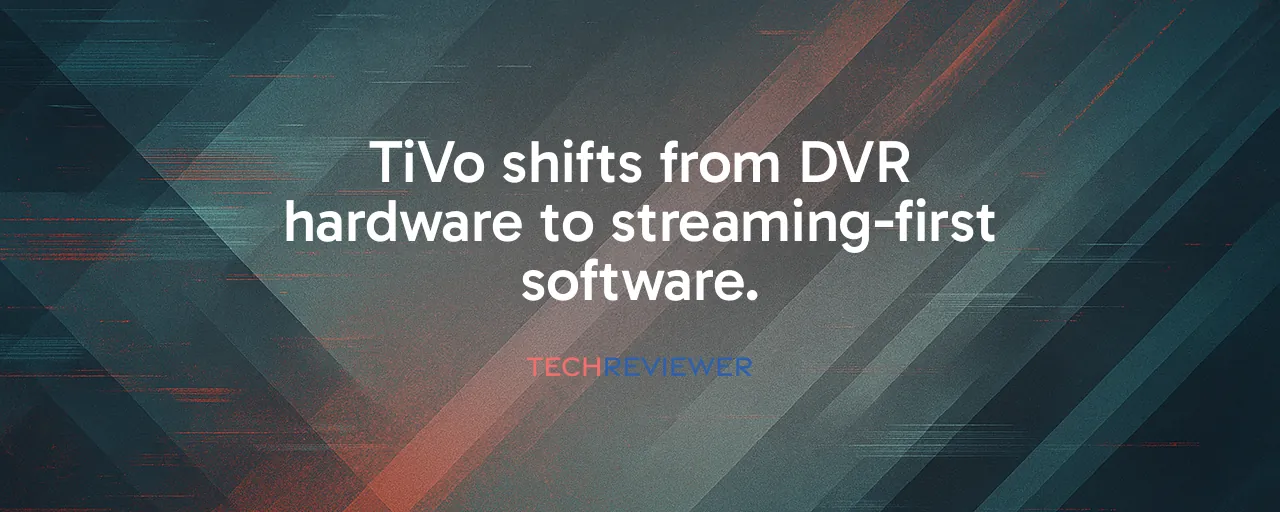TiVo's Pivot to a Streaming-First Future
Back in 1999, TiVo changed how we watched TV, letting us pause live broadcasts and skip ads with a sleek little box. Fast forward to October 2025, and the company has made a bold move: it's done with DVR hardware. As of October 1, TiVo stopped selling its Edge DVR products, confirming that its inventory is gone. Instead, the company is doubling down on its smart TV operating system, TiVo OS, which powers everything from content discovery to voice navigation. This shift mirrors a broader trend where streaming and software rule, leaving traditional cable boxes in the dust.
Why the change? The numbers tell the story. Cable TV subscribers in the U.S. dropped to 68.7 million in 2024, down 4.9% from the previous year, while cord-cutting households surged to 39.3 million. TiVo, owned by Xperi Inc., saw this coming. With 3.7 million monthly active users on its TiVo One platform by mid-2025, the company is betting on software to stay relevant in a world where streaming services like Netflix and Hulu dominate 96% of U.S. households.
TiVo OS: A New Way to Navigate TV Chaos
TiVo OS is the company's answer to a crowded smart TV market, where players like Roku, Samsung Tizen, and Google TV hold sway. Launched in the U.S. with Sharp's 55-inch TVs priced at $300 in February 2025, TiVo OS brings a polished interface that ties together streaming services, live TV, and free ad-supported channels. Its universal search lets you find a show across platforms like Disney Plus or Tubi in seconds, while AI-driven recommendations learn your tastes to suggest what's next.
Unlike competitors that push their own content, TiVo OS stays neutral, focusing on ease of use. Voice controls make navigating a breeze, and integration with smart home devices turns your TV into a central hub. With eight European partners and over 33 TV brands like Panasonic and Vestel already on board, TiVo OS is carving out a niche. But it's not alone, as Roku leads with 34% of the U.S. market in Q1 2025, while Google TV powers 24% of global smart TV shipments.
Case Study: TiVo vs. Roku's Rise
To understand TiVo's gamble, look at Roku. Starting as a simple streaming stick, Roku now powers 34% of U.S. smart TVs and 38% of programmatic ad sales in Q1 2025. Its strength lies in a user-friendly interface and deep ties with streaming services, much like TiVo OS aims to do. But Roku's ad-driven model and exclusive content give it an edge, while TiVo leans on its legacy of smart recommendations. TiVo's challenge is scale: its 9% global shipment share in Q4 2024 lags behind Roku and Samsung's Tizen at 22%.
Another case is Sharp's TiVo-powered TVs. Priced at $300, these budget-friendly sets compete with Vizio's CastOS models, which saw 25.8% growth in 2025. Sharp's TVs offer 4K resolution and Dolby Atmos, appealing to cost-conscious buyers. Yet, Vizio's ad integration and retail partnerships give it a head start. TiVo's lesson? Strong partnerships and aggressive marketing are critical to stand out in a market projected to hit $134.97 billion in the U.S. by 2033.
What's Next for TiVo's Loyal Fans?
TiVo's DVR fans aren't thrilled. Online forums like Reddit's TiVo community buzz with frustration, as users praise the brand's superior recording features, like grabbing only new episodes, over clunky cable alternatives. TiVo promises support for existing DVRs for the foreseeable future, but with cable providers like Comcast phasing out CableCARD support, some users feel stuck. The average cable bill hit $158 a month in 2025, pushing more toward streaming, where 56% of viewers find free ad-supported channels just as good.
On the flip side, TiVo OS offers a lifeline for cord-cutters. With 1,850 free ad-supported streaming channels globally in 2025, budget viewers get access to quality content without hefty subscriptions. Still, concerns linger. Smart TVs like TiVo's rely on steady internet, a hurdle in rural areas. Plus, data privacy worries grow as viewing habits fuel recommendations. TiVo's success hinges on balancing user trust with cutting-edge features.
The Road Ahead in a Streaming World
TiVo's pivot focuses on redefining how we discover content. The smart TV market is set to soar to $780.26 billion globally by 2035, driven by platforms that blend ease, affordability, and choice. TiVo OS, with its focus on neutral content aggregation, could challenge giants like Amazon Fire TV if it secures more manufacturer deals. Its cloud-based setup cuts hardware costs, and partnerships with brands like Sharp signal growth potential.
Yet challenges remain. TiVo must compete with Amazon's ad empire and Samsung's seven-year update promise. Privacy, scalability, and broadband access will shape its path. For now, TiVo's move reflects a truth about modern TV: the future isn't in boxes but in seamless, personalized experiences that bring every show, movie, and channel to your screen with a single click.
